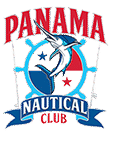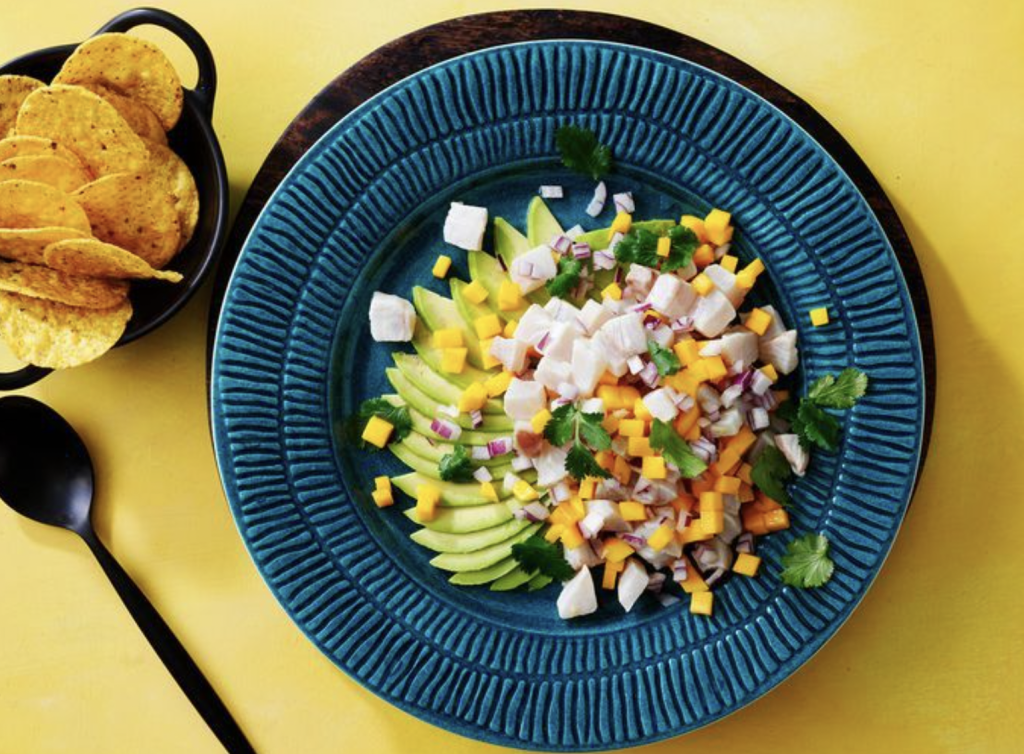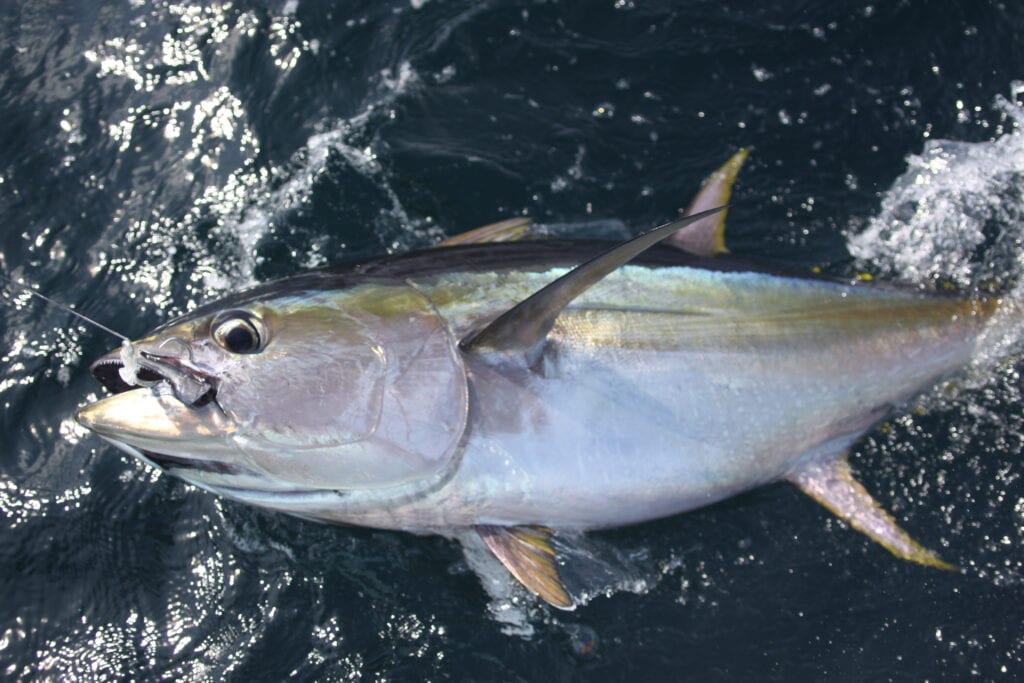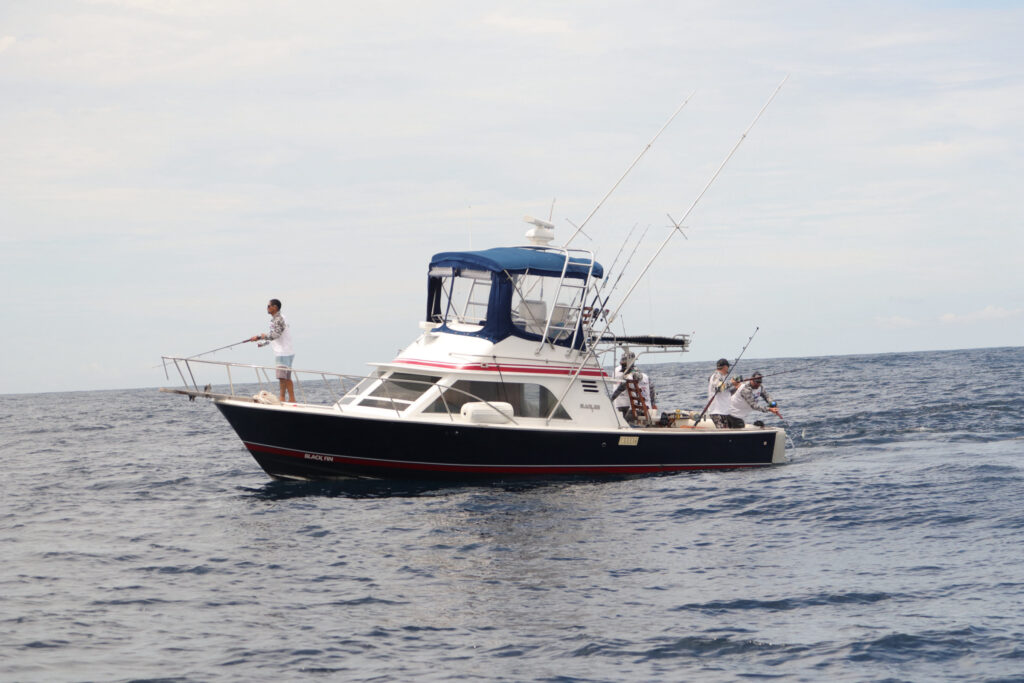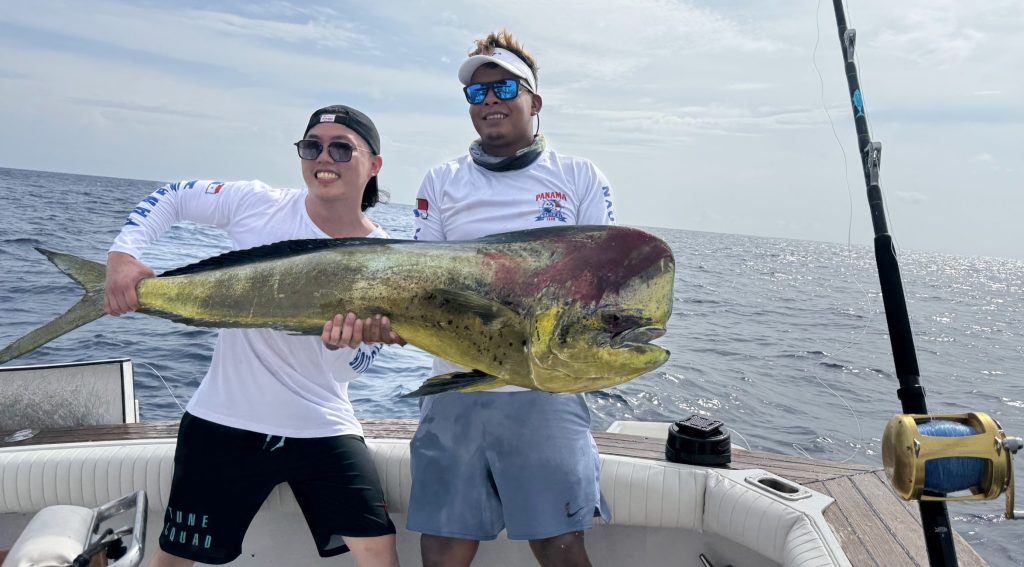Fishing for Mahi Mahi (also known as Dorado or Dolphinfish) in Panama can be an exciting and rewarding experience due to the abundance of these colorful and tasty fish in its coastal waters. The ideal and arguably most popular offshore game fish—a willing striker, sight-casting friendly, determined, and often aerobatic fighter, this beautiful catch has a tendency to be stubborn. Below is a guide on Mahi Mahi fishing in Panama:
Choosing the Right Season and Location:
Panama offers excellent Mahi Mahi fishing opportunities both in the Pacific and Caribbean coastal areas. Popular spots include the Gulf of Chiriquí, Isla Coiba, Bocas del Toro, and the Azuero Peninsula. Research or consult local fishermen to find the best location based on the season. Mahi Mahi can be found in Panama’s waters year-round, but the peak season typically falls between November and April when the waters are warmer, and Mahi Mahi are more abundant. You can refer to our fishing calendar for more information on fishing in Panama by season and species.
Equipment, Bait and Lures:
For Mahi Mahi fishing, you’ll typically use trolling or casting gear. Recommended equipment includes a medium to heavy spinning rod or a conventional trolling rod and reel combo with a 20-50 lb test line. Mahi Mahi are opportunistic feeders and are attracted to a variety of baits and lures. Common bait options include live baitfish (such as small mackerel or sardines), squid, and artificial lures. Brightly colored skirts, feathers, and diving plugs are popular choices for lures.
You don’t need to worry about fishing equipment when booking a fishing adventure with Panama Nautical Club. We supply top-of-the-line equipment and a wide range of lures and live bait to suit the target species.
Signs to Look Out for on the Water:
Floating Debris – Mahi Mahi often congregate near floating debris, such as logs, seaweed mats, and other flotsam, as these provide shelter and attract smaller fish. Keep an eye out for these signs while on the water.
Follow Feeding Birds: Mahi Mahi often swim beneath schools of feeding birds, such as seagulls and pelicans. If you see birds diving into the water to catch prey, head in that direction as it may indicate a feeding frenzy.
Find your fish of a lifetime in the waters where numerous IGFA World Records have been set, whether you’re targeting Mahi Mahi, Roosterfish, Marlin, Tuna, Snapper… The sea is always ready to welcome you back or give you a fantastic first fishing experience.
